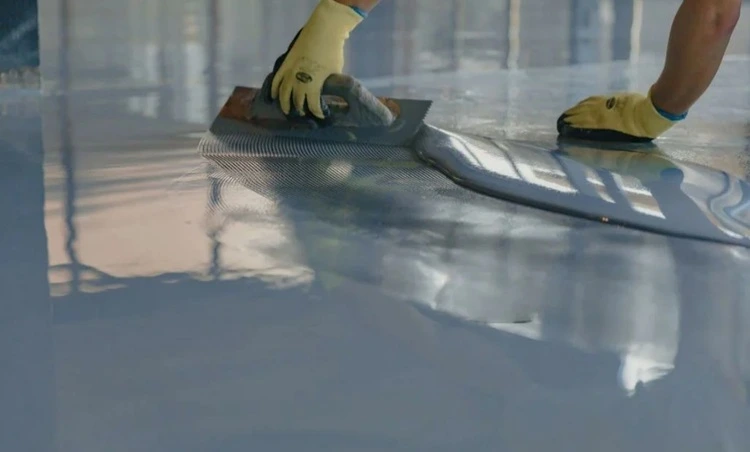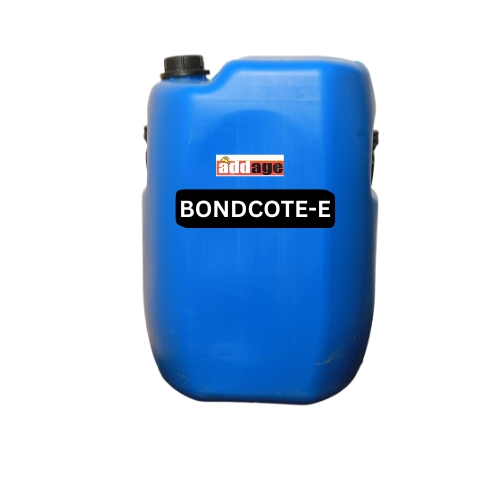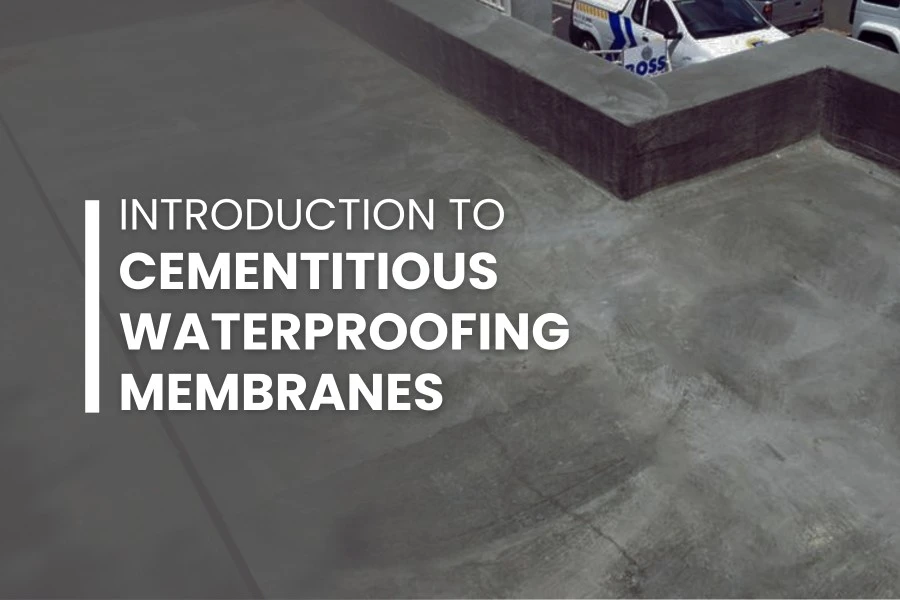Concrete is often considered one of the most durable materials for building things. Skyscrapers, bridges, tunnels, and basements are a few examples of how crucial concrete is to today’s built environment. Unfortunately, concrete is not resistant to water penetration.
Water can penetrate the concrete surface when it is unprotected, carrying with it salts, chemicals, and contaminants that can lead to the development of cracks, corrosion of steel reinforcement, and degradation of the surface layer.
Table of Contents
Cementitious Waterproofing Membranes are one of the best defenses to ensure protection from water damage and the most effective type of protection for structural durability.
What are Cementitious Waterproofing Membranes?
Cementitious waterproofing membranes are a type of coating consisting fundamentally of Portland cement plus many waterproofing agents and maybe some polymers.
Once applied to a vertical or horizontal surface (concrete or masonry), they form a breathable and waterproof coating.
Cementitious waterproofing membranes are a popular product in the construction industry because they are:
- Easy to apply with a brush, trowel, or spray on.
- Very compatible with concrete and masonry.
- Reliable in both above-grade and below-grade applications.
- Cost-effective when compared to many other alternatives.
When cementitious waterproofing membranes are coupled with modern additives (for example, Addcrete), their flexibility, bonding, and crack resistance are greatly improved. This makes them ideal for long-lasting protection against water damage.
Why Choose Cementitious Waterproofing Membranes?
Concrete structures are always subjected to the effects of water pressure, temperature fluctuations, and chemical attacks. The effects can easily become expensive without the right protection. Cementitious systems mitigate these issues by:
- Offering a continuous waterproofing membrane with both positive and negative water pressure resistance.
- Improving the durability with fewer cracks, less shrinkage, and minimal degradation of the surface.
- Providing breathability, if moisture is trapped inside the concrete, it can escape instead of blistering.
- Increasing adhesion, especially if modified with a polymer additive like Addcrete.

Types of Cementitious Waterproofing Systems
Cementitious membranes can be generally categorized into two types: 1K (one-component) and 2K (two-component systems).
1K Systems
- Supplied as a dry mix of cement, sand, and additives as a pre-packed material.
- Mixed with water on site and ready to apply.
- Simple to use in interior applications such as Basements, Foundation walls, and sometimes plastered surfaces.
- Standard 1K systems are also resistant to negative hydrostatic pressure, and thus can be used in below-ground waterproofing.
2K Systems
- Supplied as two premixed components.
- a powder (cement, quartz sand, and additives)
- a liquid polymer dispersion.
- Offers more flexibility and the ability to bridge cracks.
- Forms a seamless and elastic membrane that resembles a rubber-like material.
- It can also be used in areas where there is potential for continuous contact with water, such as swimming pools, water tanks, terraces, and bathrooms.
When reinforced with polymer dispersions like Addcrete, 2K systems provide superior bonding, elasticity, and long-lasting performance.
Where are Cementitious Waterproofing Membranes Used?
Cementitious waterproofing systems are adaptable and useful in numerous construction projects, including:
- Bathrooms & Kitchens – Protects tiled surfaces from water leakage.
- Swimming Pools & Water Tanks – Provides watertight continuity.
- Basements & Foundations – Provides protection to below-grade items from groundwater.
- Terraces, Decks & Balconies – Stop water leaking and dampness.
- Industrial Facilities – Protects tunnels, reservoirs, storage tanks, and garage slabs.
Benefits of using Cementitious Waterproofing Membranes
- Easy and convenient application (brush, trowel, spray).
- Great adhesion to concrete and masonry.
- Great crack resistance (especially with the modification of the polymer).
- Breathable barrier that allows for vapor release.
- Durability in wet and dry conditions.
- Economically viable and easily sourced.
Addcrete and Cementitious Waterproofing
Addcrete is a performance polymer additive that modifies the performance characteristics of performance cementitious systems in a way that is generally beneficial for the performance of modern waterproofing systems. When added to cementitious coatings, Addcrete:
- Enhances flexibility and crack-bridging.
- Improves adhesive bonding to concrete surfaces.
- Provides greater resistance to water penetration and chemicals.
- Offers durability in wet-dry cyclical situations.
This means an Addcrete modified Cementitious membrane will perform exceptionally well in any modern waterproofing situational requirement.

Why Choose Sakshi Chem Sciences?
Through our years of waterproofing experience, we have discovered that waterproofing needs to be durable and effective. After more than 20 years of experience, amazing R&D laboratories, and stringent protocols for quality, we manufacture the highest quality Cementitious Waterproofing Membranes and polymer additives such as Addcrete.
All of our products from Sakshi Chem Sciences Pvt. Ltd. have been trusted throughout India and the world, including places as diverse as the Middle East, Africa, Europe, and South-East Asia, and each membrane and additive is cost-effective, user-friendly, and made to endure the most demanding construction circumstances.
Conclusion
Concrete might be the structure of the future, but it cannot be built with a capacity for water resistance until we can waterproof it.
Cementitious Waterproofing Membranes with durable performance polymer additives such as Addcrete, considerably enhance the durability, cost effectiveness, and reliability of every waterproofing system, and whatever your application: basement, swimming pool, or other big grade, a modern waterproofing cementitious membrane meets all the necessary criteria to provide the capacity for resilience and flexibility that modern construction requires.
FAQS
Q1. What are Cementitious Waterproofing Membranes?
They are cementitious coatings that provide a durable waterproof barrier for concrete and masonry surfaces.
Q2. Where do we use Cementitious Waterproofing Membranes?
Most applications are in basements, water tanks, bathrooms, swimming pools, terraces, and foundations.
Q3. What is the difference between a 1K and a 2K system?
A 1K is a single-component mix with water, and a 2K mix is powdered polymers and liquid polymers for more flexibility.
Q4. Are Cementitious Waterproofing Membranes durable?
Yes, they provide long-term protection for water seepage, all cracks, and the weather.
Q5. Why choose Addcrete for your waterproofing solutions?
Addcrete products give you superior bond, flexibility, and durability for your heavy-duty construction needs.
Sagar Telrandhe is a Construction Engineer with a B.Tech in Construction Engineering & Management. Passionate about infrastructure development, project planning, and sustainable construction, he specializes in modern construction techniques, project execution, and quality management, contributing to efficient and innovative building.


